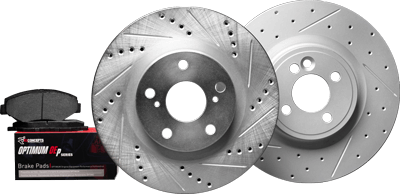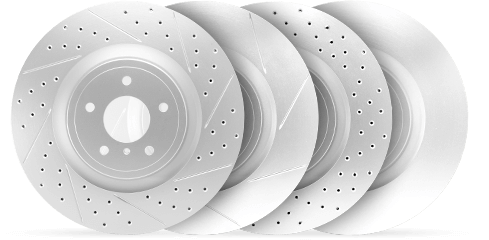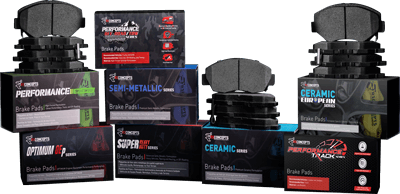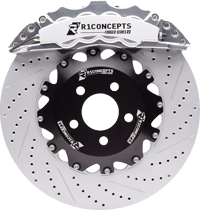Maintaining your brakes is not as daunting as it may seem, and lubrication is a critical part of the process. Our guide breaks down the steps on how to lubricate brakes, ensuring you use the right materials for effective results. Let’s cut through the complexity and get straight to the heart of brake maintenance—keeping you safer on the road with well-lubricated brakes.
Key Takeaways
Proper brake lubrication is important for maintaining your brakes overall performance. It is not an extra add on that you can skip or forget about.
It is best to read your car’s vehicle manual for guidelines on the right type of lubricant and lubrication methods for the specific vehicle model, and perform a test drive after lubrication to ensure its condition.
Using the correct type and the right amount of brake lubricant is important. Using the wrong type of lubrication can cause damage to your braking system in which can result into serious issues like unnecessary car repair expenses and high risk of road related accidents and injuries. Both over-lubrication and under-lubrication can lead to brake performance issues, so it is best to lubricate properly.
How to Properly Apply Brake Grease?
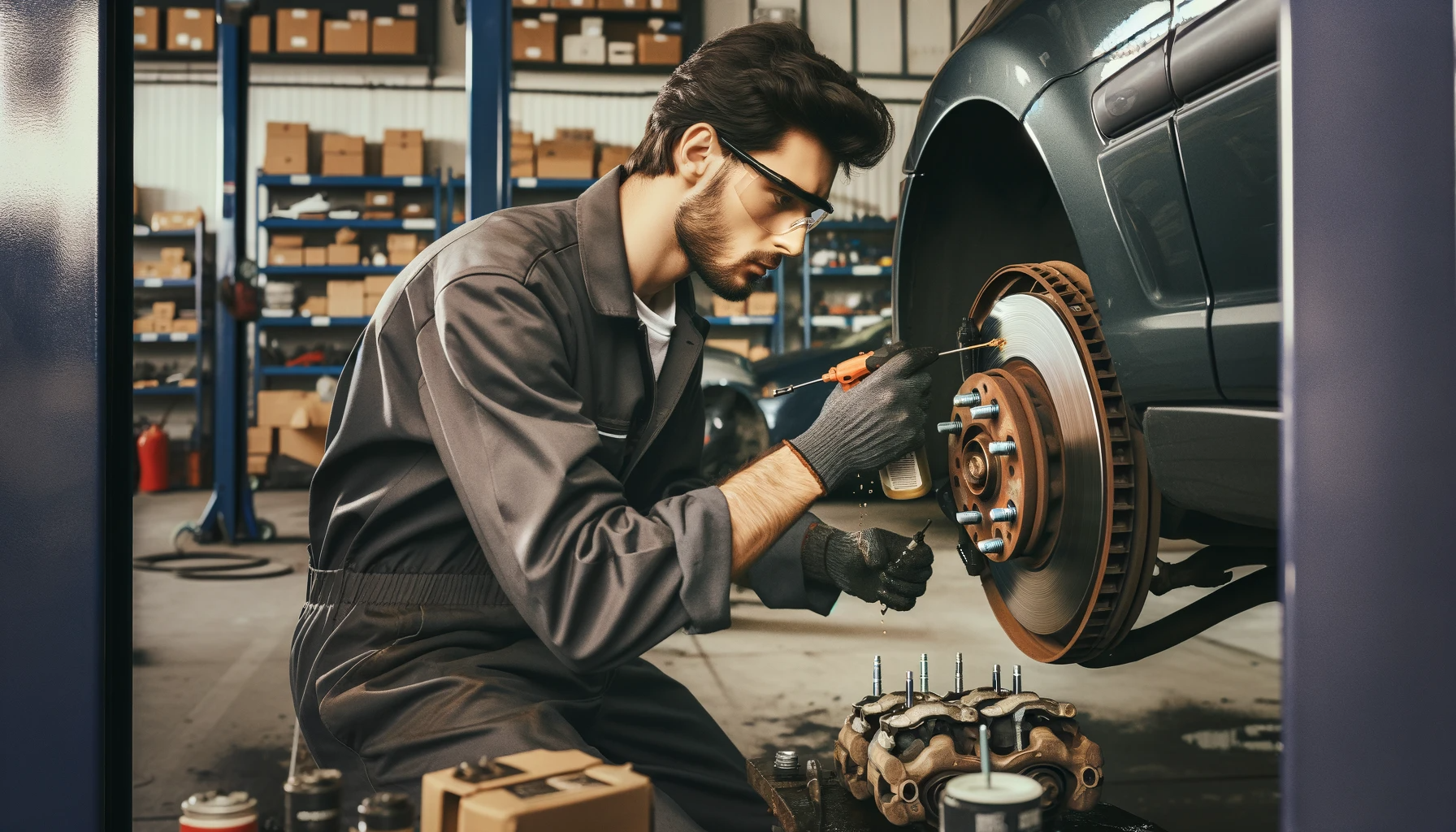
Applying brake grease correctly is key to keeping your brakes working well. Doing it right helps your brake pads and other parts last longer and work better.
If you applied your brake lubricant incorrectly, it will harm your brake system and reduce your car’s safety and performance in which can result in drastic events like and accident.
So, it’s important to apply brake lubricant the right way, and here at R1 concepts will help you how to do it.
Check Vehicle Manual
Because not all vehicle models are the same, it is best to read your vehicle manual as the first step when you are going to lubricate your brakes.
Your vehicle manual will provide you clear instructions on how to apply lube to your brakes, including what type of brake lube to use and how to apply it on certain lubrication points.
In addition to providing instructions for brake lubrication, your vehicle manual also offers valuable insights into your driving conditions and how they may impact your brake performance. This will help you figure out how often you should lubricate your brakes and if they need other maintenance.
Check Brake System Type
It’s important to know the type of brake system your car has to ensure the proper lubrication of your brakes. There are two main types of brake systems: disc rotor and drum brakes.
You may have already identified your brake system type after you read your vehicle manual, but if you haven’t yet, you can identify your brake system type by inspecting your vehicle.
If you see a shiny smooth metal surface through the wheel, you likely have a disc rotor. If not, you probably have drum brakes.
Identify What Materials Are Needed
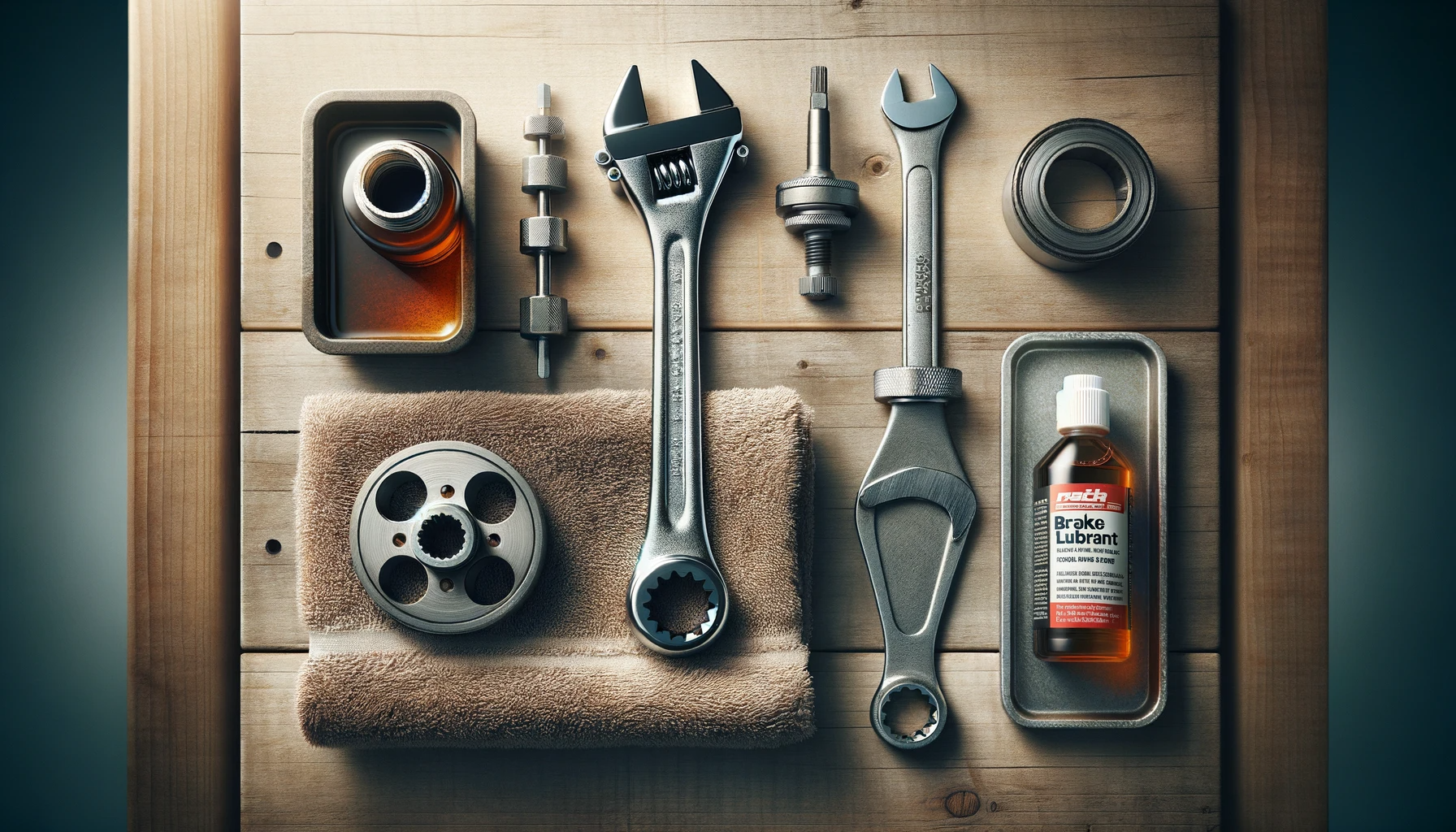
After looking at your vehicle manual and determining the type of brake system your car has, it is now time to gather all the necessary tools and materials before starting the lubrication process. This includes:
Brake piston tool: This tool is used to retract the brake piston to allow for new brake pads to be installed. It is a crucial part of the brake lubrication process.
Torque wrench: A torque wrench is used to apply a specific amount of force to a fastener such as a nut or bolt. It is a crucial tool when tightening the bolts on your vehicle’s brake system to the manufacturer’s specifications.
Disc brake piston tool: Similar to the brake piston tool, this specific tool is designed for disc brake systems. It is used to push back the piston in a disc brake caliper to allow for the installation of new pads.
Allen/Torx set: An Allen/Torx set is needed for removing and installing screws on your vehicle’s brake system. The set includes various sizes to fit different screws.
Brake line wrench: This tool is used when you need to disconnect the brake lines during the brake lubrication process. It is designed to prevent the rounding off of brake line fasteners.
You will also need the following items:
Brake cleaner to ensure that the components are clean before the application of brake grease. There are various types of brake cleaners suitable for this purpose, including chlorinated options.
Protective gear such as gloves and eye protection to ensure your safety during the process.
It’s recommended to use a protective shield when lubricating areas with plastic or rubber parts to safeguard the seals from any damage.
A soft cloth to remove any loose materials from the brake system before applying the brake grease.
Find Lubrication Points
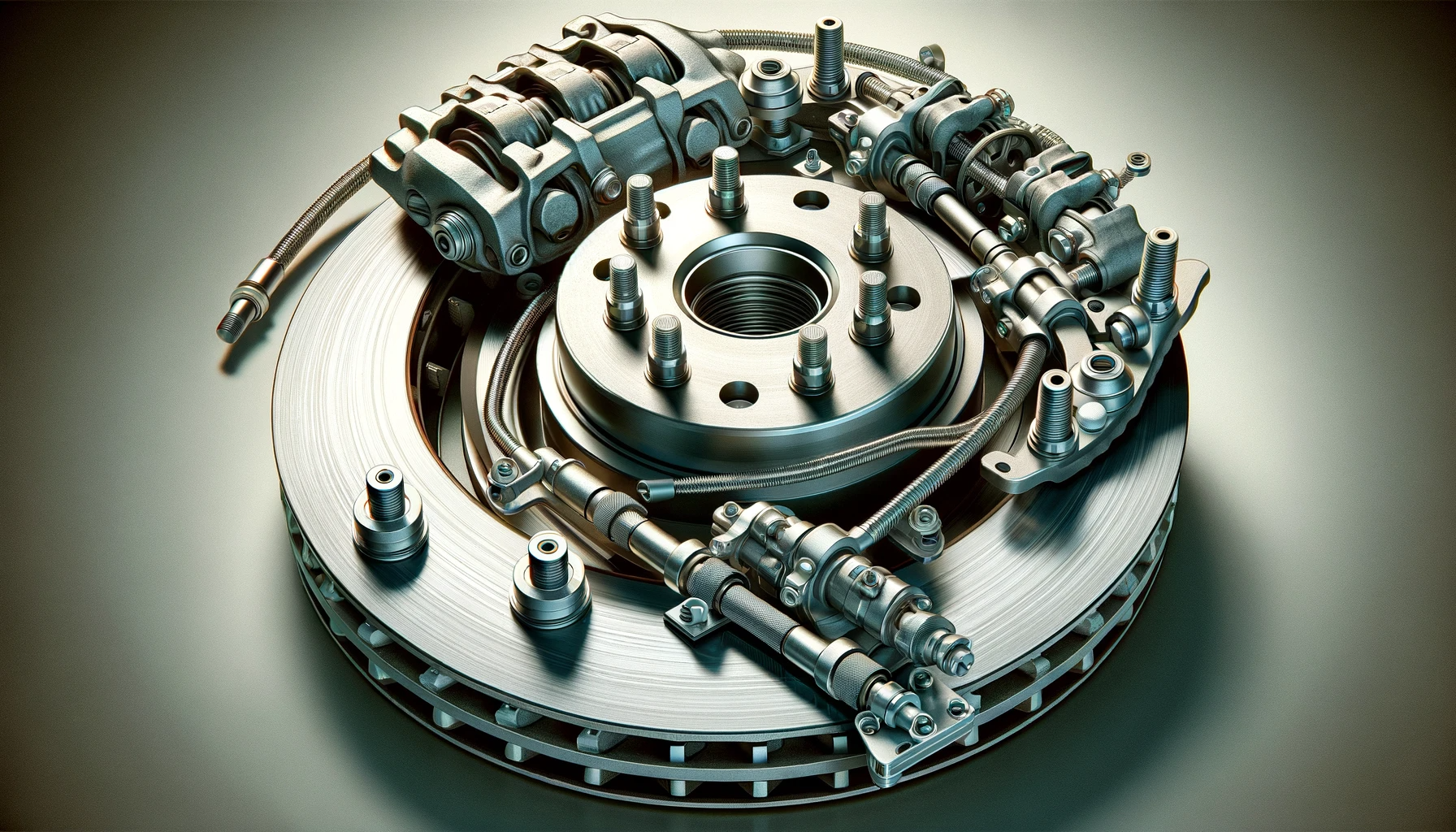
Knowing how to properly apply brake grease and identifying the correct points of application is key for a successful application. If your car uses a disc rotor, you should apply the lubricant to the following areas:
caliper slides
pins
bushings
cables
linkages
Additionally, applying lubricant to the caliper housing side of the brake pads and the self-adjusting mechanisms on rear disc brakes with locking calipers is also important.
Be careful not to get any lubricant on the braking surface itself, or on any rubber and plastic components, as these materials can deteriorate when they come into contact with the lubricant.
For drum brakes, only apply brake lube to the following metal-to-metal contact points:
Backing plate raised pads that supports the brake shoe.
Parking brake cables
Any moving parts or links
The adjustable star-wheel that separates the shoes
DO NOT LUBRICATE THE INSIDE OF YOUR BRAKE DRUM WHERE THE SHOES INTERACT WITH THE DRUM. When you lubricate these areas, it may cause your brake system to not work properly and may result into deeper problems like a more expensive car repair or threat to safety.
it is important to know that you need to avoid lubricating any areas that can come contact with plastic or rubber materials inside your braking system.
Testing Your Brakes After Lubrication

Conduct a brief test drive after lubricating and reassembling your brakes. This allows you to carefully observe and assess the feel and sound of your brakes, ensuring that they’re functioning as they should. Here’s a detailed guide on how to do a test brake:
First Test While Stationary: Start your car and press the brake pedal several times while it’s parked. This helps you feel if the pedal’s resistance has changed. If the pedal feels too soft or spongy, there might be a problem with the lubrication you’ve just done.
Slow Speed Test: Next, you should do the slow speed test where you drive slowly in a safe place, like an empty parking lot and feel the performance of the brakes. Try braking at different pressures. The brakes should work smoothly and quickly. Listen for strange noises and feel for any changes in the brake pedal’s resistance.
High Speed Test: Once you’re confident about the brakes’ performance at slow speeds, proceed to test them at higher speeds. This should ideally be done on a straight and quiet road with minimal traffic. Apply the brakes at different pressures, and observe their response. The vehicle should stop in a straight line without any unusual noises or vibrations.
Emergency Stop Test: The final test is the emergency stop. At a moderate speed with no traffic behind you, press the brake pedal hard and fast. The vehicle should come to a stop quickly without swerving or skidding, indicating that the brake system is working efficiently.
You want your brakes to respond smoothly and consistently during these tests. Any squealing, grinding, or other unusual noises could indicate a problem. If the vehicle pulls to one side when braking, or if the brake pedal feels spongy or vibrates, this may indicate that there’s an issue in your braking system and would need to consult a professional car mechanic.
How Often Should I Lubricate My Brakes?
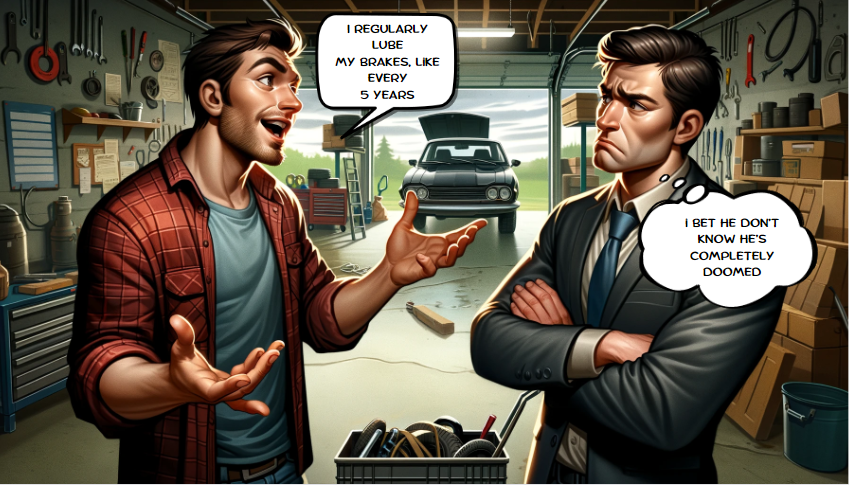
How often should you grease your brakes? It depends on your driving style, where you live, and your car’s manufacturer guidelines.
Usually, you should grease your brakes whenever you replace your brake pads. This is often every 30,000 to 70,000 miles, but it can change based on your car’s make and model and your driving style.
You should lubricate your brakes if you are hearing signs of wear like squeaking or grinding noises, a shaky brake pedal, or a drop in brake performance. If you see any of these signs, it might be time to grease your brakes, no matter when you last did it.
in a time point, it is best to lube your brakes at least yearly.
Is It Safe To Lube Brakes By Myself?
Yes, it is completely safe to lubricate your brakes by yourself as long as you know how to do it properly.
This task does not require any specialized training or equipment, and can be done at home with a few basic tools. It’s a straightforward process that involves applying a specific type of lubricant to certain parts of the brake system.
However, it’s important to remember that while it’s safe, it’s also a task that requires careful attention to detail. Missteps can lead to ineffective lubrication that can cause damage to your brake system.
Additionally, it is important to prioritize safety when you grease your brakes on your own. Wearing appropriate gear such as gloves and eye protection is best when doing so. These precautions will help prevent potential injuries from brake components or lubricants.
How Much Brake Lubricant Should I Use?
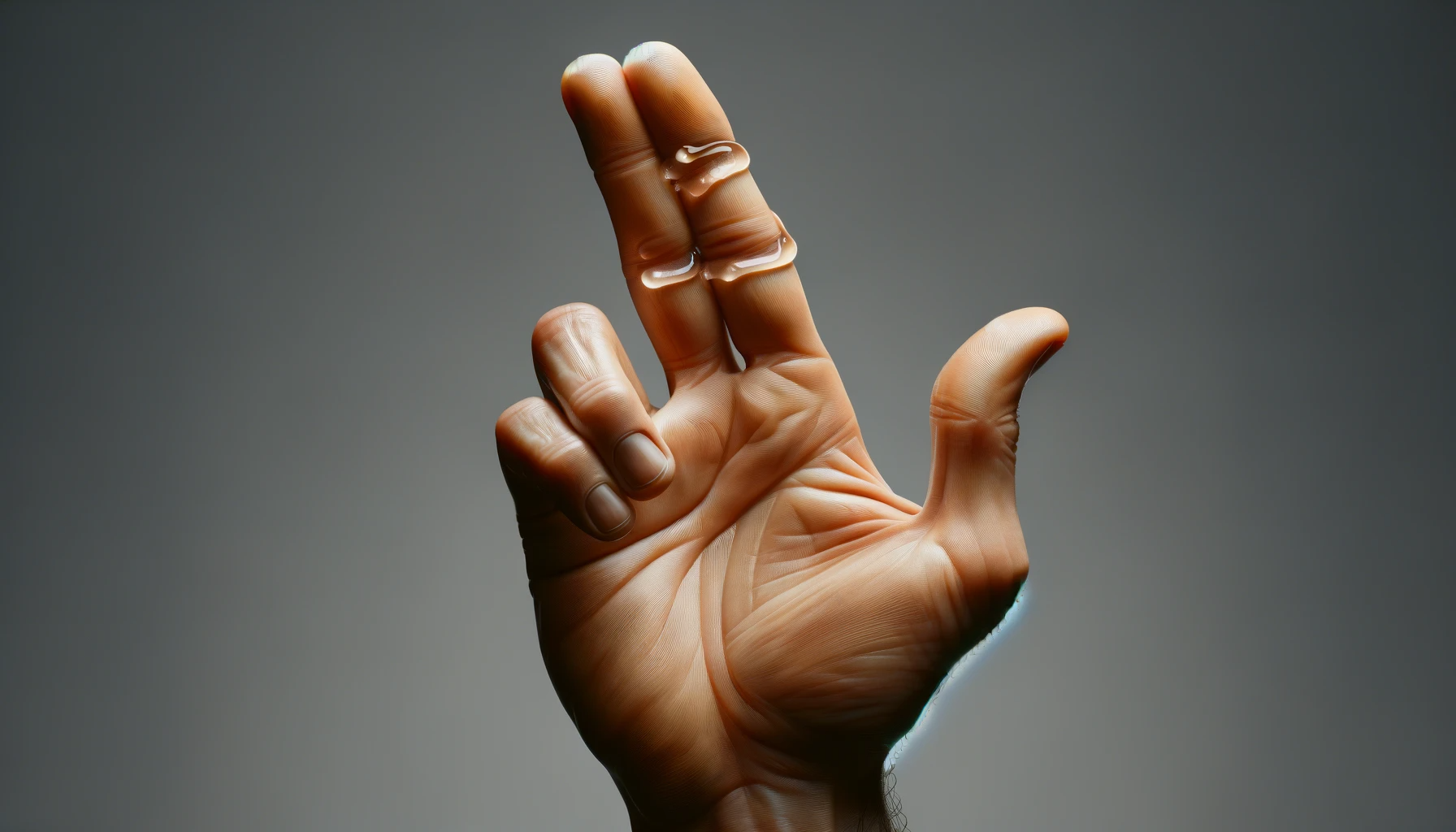
When lubricating your brake system, applying a thin layer, about more or less a size of a pea is enough.
Excessive application of brake lubricant can result in diminished brake effectiveness, potentially posing a safety risk. Therefore, it’s important to strike a balance and ensure that you’re not applying too much or too little lubrication.
What Type Of Brake Lubricant Should I Use?
It’s recommended to use a silicon-based brake grease for lubricating your brakes because they are heat resistant and does not degrade rubber and plastic components.
Silicone-based brake lubricants, as mentioned, have high resistance to heat, which is a great thing given the high temperatures that braking systems often reach. They also do not degrade rubber and plastic components, so there’s minimum to no damage in case your brake lubricant came into contact with the plastic and rubber components of your brake system.
For lubricating brake drums, specifically their metal-on-metal components, a dry film lubricant that contains either graphite or molybdenum disulfide is recommended.
Much like the silicon-based lubes, these types of lubricants are highly effective due to their ability to withstand high temperatures and pressures, which are common in brake systems.
Graphite and molybdenum disulfide, in particular, are known for their excellent lubrication properties and durability under extreme conditions. They form a thin, yet strong, lubricating film on the surface of the components, reducing friction and wear while enhancing overall brake performance.
Remember, the right lubricant can make a significant difference in the lifespan and efficiency of your brake system, so choose wisely.
Do I Really Need To Grease My Brakes?
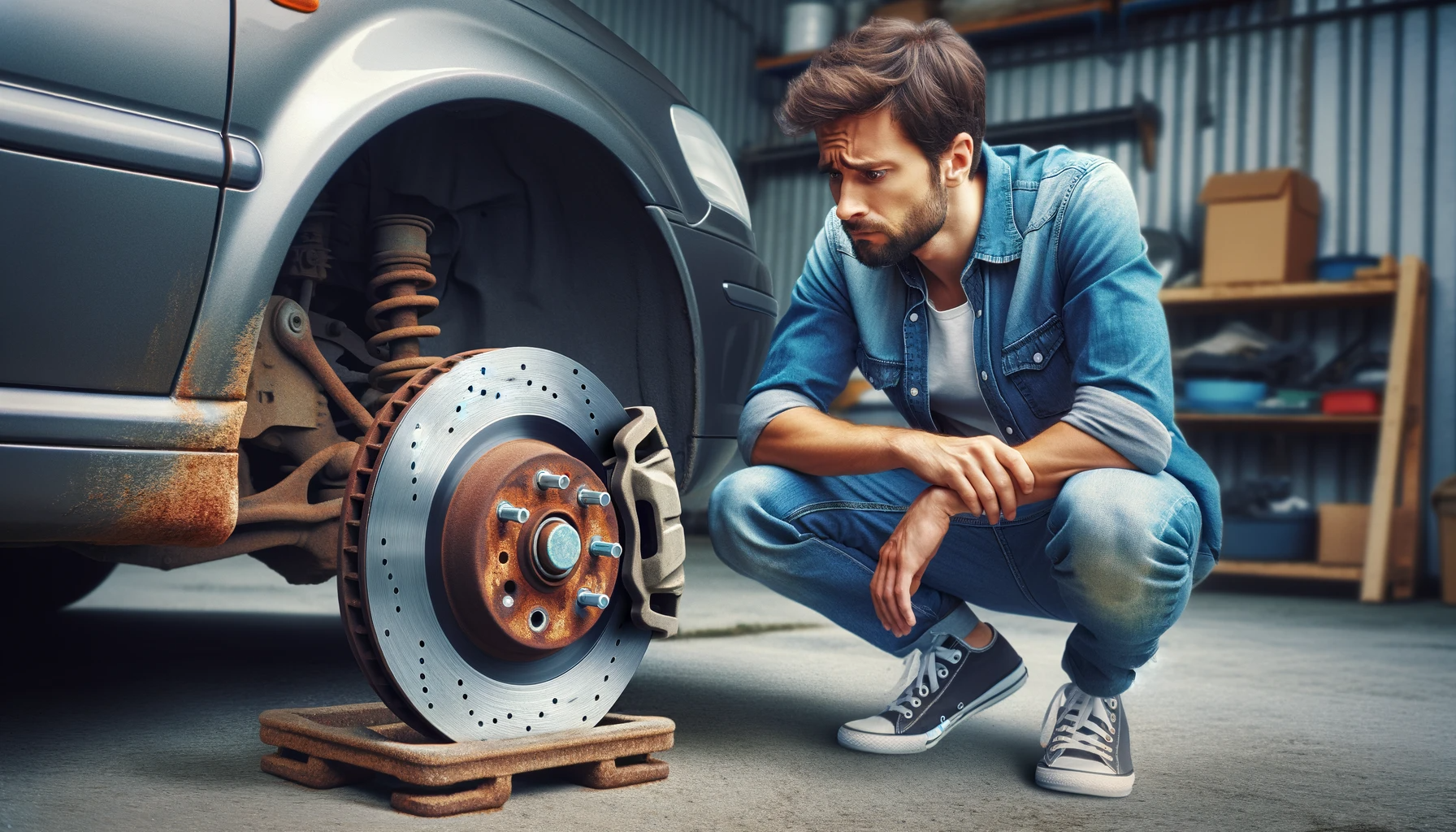
While it might seem like an extra step, greasing your brakes is a necessary part of brake maintenance. It offers several benefits, including:
Improved braking performance
Reduced noise
Prevents premature wear and tear
Protects your brake system against corrosion and rust
Failure to lubricate your brakes can negatively impact the performance and longevity of your brake system. So it is best to lube your brakes from time to time
How Do I Know If I Over-lubricated Or Under-lubricated My Breaks?
Over-lubricated Brakes
Over-lubricating your brakes can lead to problems such as:
Slippery rotors
Decrease in brake performance
Diminished brake effectiveness
Possible brake failure
Lubricant dissipating under high heat or extreme driving conditions.
Under-lubricated Brakes
Under-lubricating your brakes, on the other hand, can result in:
squealing or screeching noises caused by vibrations and increased wear
a reduction in braking performance
in certain instances, complete failure of the braking system.
To sum up, proper lubrication is crucial for maintaining the performance and longevity of your brakes. Whether it’s knowing the type of brake system in your vehicle, understanding how to apply brake grease correctly, or choosing the right type of lubricant, each step plays a vital role in ensuring the optimal functioning of your brakes.
Always remember, safety should be your top priority, whether you’re on the road or maintaining your vehicle.
Frequently Asked Questions
How Much Does Brake Grease Cost?
The cost of brake grease can vary depending on the type and brand. Here are some estimates for different types of brake lubricant:
Petroleum-based Brake Lubricant: This type of lubricant is generally the least expensive, with prices ranging from $5 to $15 per container.
Silicon-based Brake Lubricant: Silicon-based lubricants are a bit more expensive due to their high heat resistance and non-degrading properties. Prices can range from $10 to $20 per container.
Dry Film Brake Lubricant with Graphite: These lubricants are often the most expensive due to their high performance under extreme conditions. Prices for this type of lubricant can range from $15 to $30 per container.
Please note that these are just estimates and actual prices can vary based on factors such as brand, quantity, and where you purchase them from.
Can I spray wd40 on my brake pads?
No, you should not spray WD-40 on your brake pads as it can compromise their effectiveness. Instead, use brake cleaner to clean them thoroughly.
What are the potential issues with using the wrong lubricant or applying it incorrectly?
Applying the wrong lubricant or doing so improperly can lead to multiple problems. These include diminished brake performance and responsiveness, faster wear and tear of brake components, and potential damage to the hydraulic system. Incorrect lubrication can also decrease braking power, harm the brake disc, and overall compromise the effectiveness of your brakes, making your vehicle less safe to drive and potentially leading to severe accidents if not addressed promptly.
How Can I Lubricate Drum Brakes?
You’ll want to apply lubricant to the points where the brake shoes contact the backing plate. These are typically small raised areas on the backing plate. Also, lubricate the adjuster mechanism and the ends of the brake shoe where it contacts the wheel cylinder pistons, if accessible.
What Does Brake Fluid Do?
The brake fluid acts like a messenger in your car’s braking system. When you press the brake pedal, the brake fluid transfers the pedal force into pressure and quickly sends a signal to your car’s brake pads or shoes to slow down or stop. Aside from that, brake fluids also keeps the brake parts moving smoothly and protects them from rust, ensuring your car stops safely every time you press the pedal.


